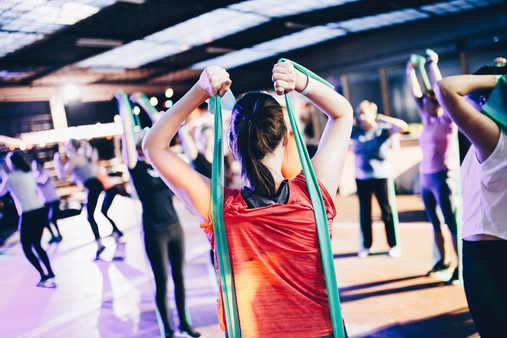The pain spares no one. At least 12 million French people suffer from chronic pain. Fortunately, exercise is the most common way to treat chronic pain and improve your overall health. Moderate activity can help reduce inflammation, increase mobility and reduce overall pain.
Here is a combination of cardio, relaxation, stretching and strength training exercises to relieve pain:
Cardio exercises
Cardiovascular exercise has several physical and mental benefits and can be especially helpful for people with chronic pain. Cardio can be done at any time of the day and does not require any special equipment.
- The walk Walking: Walking for 30 minutes 3 to 5 times a week can help increase strength, endurance and heart health. If walking is difficult for you, start slowly and work your way up to longer walks as you get stronger. If you use a walker or cane, be sure to take it with you.

- Swimming, aquagym or aquabike For people with reduced mobility, it is an excellent alternative to walking. This low-impact cardiovascular exercise can help you keep moving without stressing your joints and muscles. Swimming can often be therapeutic, and is a great way to clear your mind.
Relaxation Exercise
Relaxation exercises are important for many people with chronic pain. The visualization does not require any equipment and can be performed anywhere.
- Deep breathing and visualization:
1. Lie on your back or another comfortable position on the bed or floor.
2. Place your hands on your belly and relax your shoulders and feet.
3. Breathe in deeply through your nose and close your eyes.
4. Breathe out through your mouth, making sure to release all the air in your lungs.
5. Continue breathing through your nose and mouth. You should feel your belly rise under your fingers with each breath. Continue this pattern and visualize the pain leaving your body with each breath.
6. Repeat each night before bed or throughout the day if necessary. - Stretching exercises: If you have chronic lower back or neck pain, stretching can relieve tension and stiffness.

Lower back and gluteal stretch
- Lie on your back.
- Bring your knees to your chest, then wrap your arms around your knees and hug each other gently.
- Rock from side to side, feel the stretch through your hips and lower back.
- Try crossing one leg over the other to get an extra stretch in the gluteus and piriformis.
- Stand or sit next to a door.
- Raise your elbow above the shoulder on the side you want to stretch.
- Rest your elbow against the door jam. This will rotate the outside of the scapula upward.
- Then turn your head away from that side and bring your head down.
- Gently deepen the stretch by placing your free hand over your head and applying gentle pressure.
Neck and Scapula Stretch
Strengthening exercises: Strengthening muscles is important to stabilize joints and prevent future injuries. Working the muscles of the abdomen, hips and back can help improve core strength and stability. Try the exercises below.
- Start by lying on your back with your arms stretched out above you, as if you were reaching for the ceiling.
- Lift your feet in the air and bend your knees to 90 degrees. Stimulate your heart by relaxing your ribcage and pulling your belly button towards the floor.
- Exhale, then lower your left leg to the floor without touching it. At the same time, extend your right arm toward the ground above your head. Hold this position for 1 second. Return to the starting position.
- Repeat on the other side. Do 10 reps on each side.
- Start by kneeling on all fours with your wrists under your shoulders and your knees under your hips.
- Make a flat back. Pull your shoulder blades down your back and engage your core by pulling your belly button up your spine. Always keep your back flat.
- Place one leg behind you. Lower your leg, tap your toe on the floor, then lift. Do not lift the leg above the hip level. Repeat 10 times, keeping your core active throughout the exercise and moving only your leg.
- Repeat on the other side.
- You can increase the intensity of this exercise by kneeling on a stability ball or foam roller.
Always consult your doctor before starting an exercise program. Specific exercises may vary depending on the origin of your pain. It is always best to consult a physiotherapist for a personalized exercise routine. Some conditions, such as fibromyalgia, can cause increased pain during exercise. So start slowly and monitor your symptoms.



